Header tag SEO is one of the most effective ways to expand the number of keywords a single page can rank for. Pages ranking for more keywords are undoubtedly going to receive supplemental traffic, the number of which can be exponentially larger than your original targeted volume. While there are many different ways to use SEO in growth marketing, putting elements like this under a microscope can really make a difference.
We all know writing real, informative content is the best way to improve your rankings but I see far too many content creators leaving traffic on the table by not incorporating researched header tag SEO. Once you’ve implemented a solid foundation, testing different header options and combinations can provide even better results. While header tags can essentially go on forever, I’m going to be discussing the architecture and importance of header tags one through three. If you’re executing content for a client, writing content for your blog, and are looking to generate more traffic from the content you already have, let’s talk header tag SEO.
Want to skip right to the SEO part? Here’s a link.
What are header tags?
Put simply, header tags and the structure in which they appear, organize and communicate the importance of each section within a page. Header tags are built into the code of your page and allow search engines like Google to get a very clear view of your content structure when it visits your site for the first time.

Google and most crawlers will fetch your HTML ahead of your CSS and JavaScript files. The importance of this sequence comes down to providing the earliest indication of structure so you reduce the friction for crawlers to understand your content.
The 3 Main Types of Header Tags
1. Header 1 – <h1>
An <h1> tag is meant to be used as the page title. This is likely the most important in terms of SEO as it communicates the area in which you hope to be ranked. Excluding the topic or phrase, you’re aiming to rank for from this section and you might as well take the gas out of the car before the big cross-country trip.
| <h1>Hi! I’m a header tag, I’m here to communicate the main message of this piece of content.</h1> |
2. Header 2 – <h2>
Header or heading 2 tags are subsections of your content that are meant to be supporting elements of the overall message found in your title. This is the primary section of your content where header tag SEO will come into play.
| <h1>Hi! I’m a header tag, I’m here to communicate the main message of this piece of content.</h1> <h2>I’m a supporting tag that is meant to support the overall message found in the title.</h2> |
3. Header 3
Header 3 tags are…you guessed it, supporting the idea or message found in your heading 2 tag. Consider this blog post you are reading right now, each header tag type example is an <h3> because the “Types of Header Tags” is an <h3>. Structure is a beautiful thing.
| <h1>Header Tag SEO</h1> <h2>types of header tags</h2> <h3>Header 1 tag</h3> <h3>Header 2 tag</h3> <h3>Header 3 tag</h3> |
Importance Of Header Tags
Most people outside of the marketing world wouldn’t think of it as finding the right header tag, but they’re looking for the section that best aligns with their particular question. Header tags have their own SEO implications but the ease of consumption should be held high on the board, especially when writing dense content.
1. Improve Content Readability
Readability is often under-appreciated when it comes to SEO. Breaking up text is vitally important. For sites that primarily receive mobile traffic, this problem is even larger than some may think.
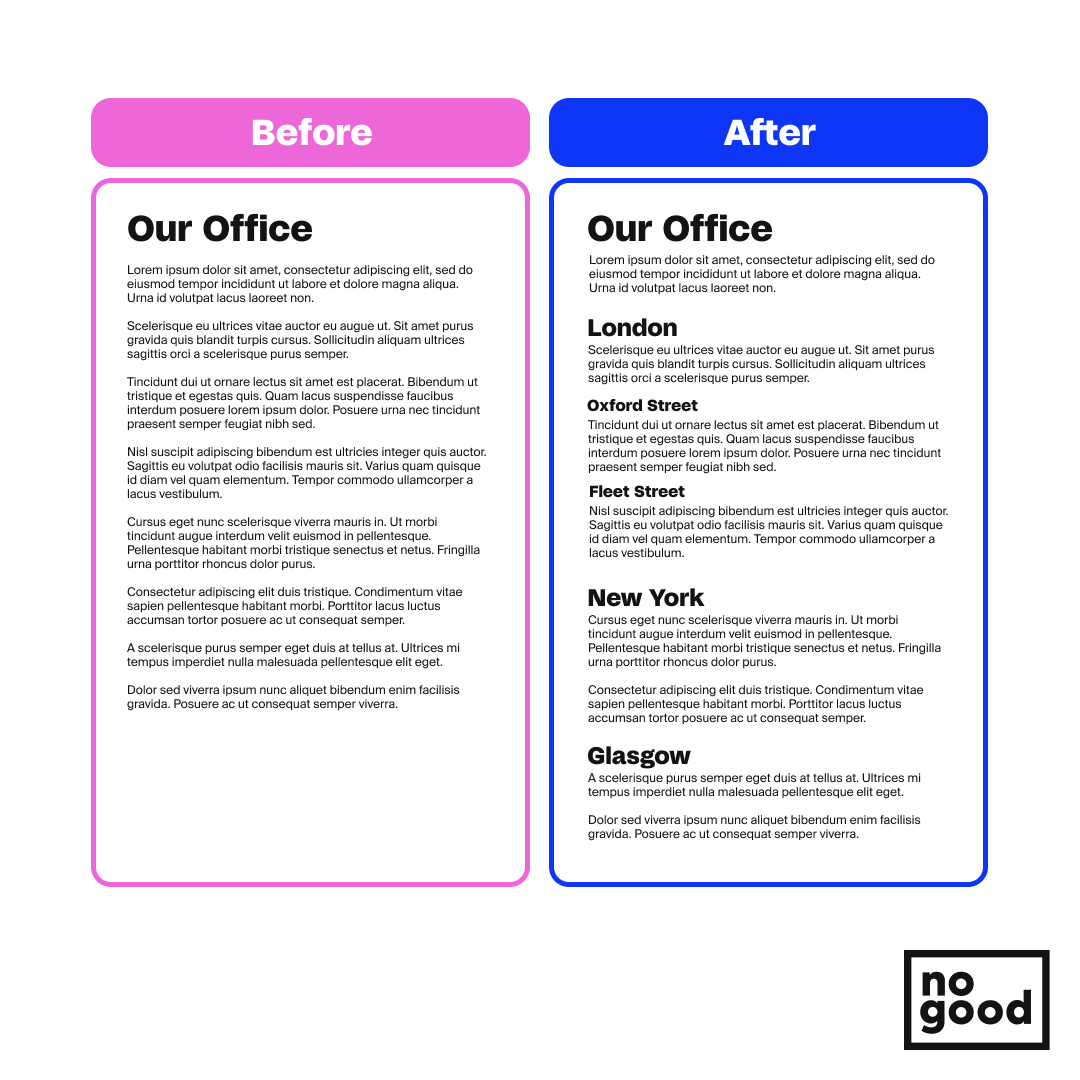
Many marketers are constantly working from laptops in coffee shops or a quaint bistro-pub and forget to emulate their blog content on a mobile device to see how a mobile user may land and absorb your content.
2. Improve Historical Rankings
As we talked about before, HTML header tags are the most primitive view of your content and provide a clear sense of your content structure and targeting to crawlers like Google. Having this quick understanding no doubt plays a role in the speed at which your content ranks and the quality of that ranking.
People Also Ask
Properly targeting questions that may appear as secondary terms can help Google recognize your content and serve it up in the People Also Ask sections found in the SERP. Google will sometimes test your content in these sections if they are properly aligned. For example, when I do the search “custom surfboards” I find the following questions in the SERP. If I were targeting that term, I might want to include that or verify it has search volume.
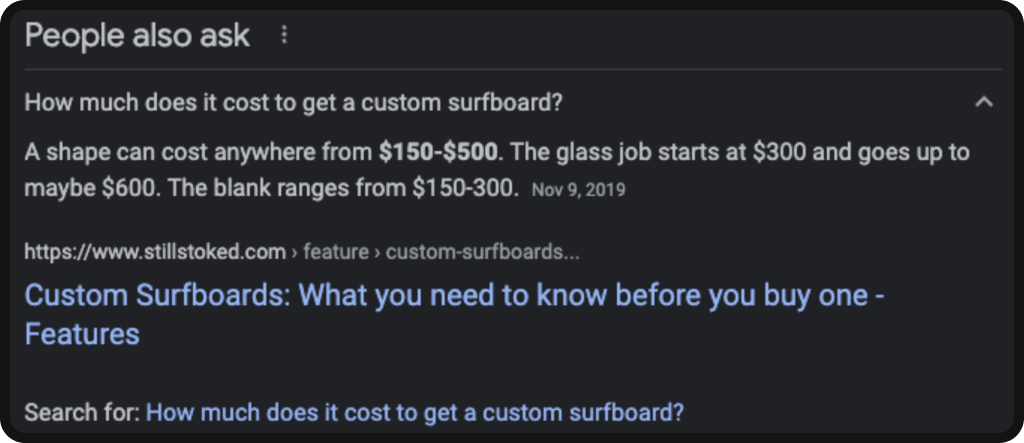
Featured Snippets
Featured snippets are another form of targeting that you can include in your strategy if the keyword and traffic alignment make sense. Google may choose to surface your content in the form of a featured snippet.
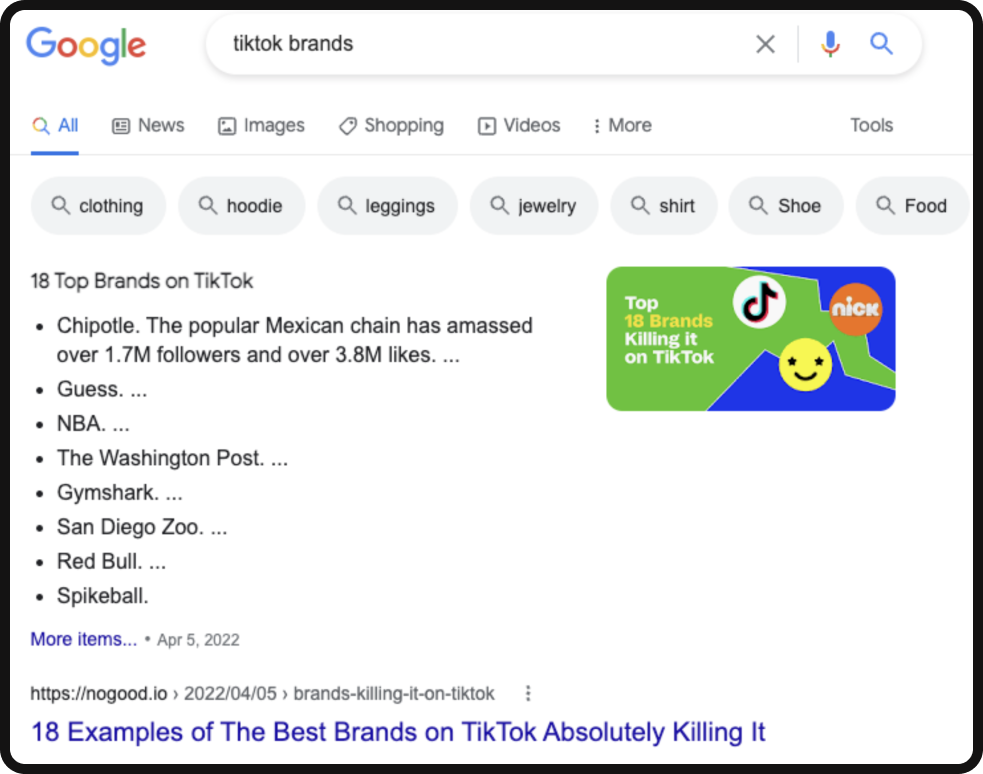
3. Increase Traffic From Individual Pages
Being able to increase your traffic by revisiting old articles and optimizing for secondary keywords is an ideal way to get more traffic for the content you’ve already created. While your content may need more than just header tag optimization, it’s a good place to start as a test to see how your content rankings fluctuate.
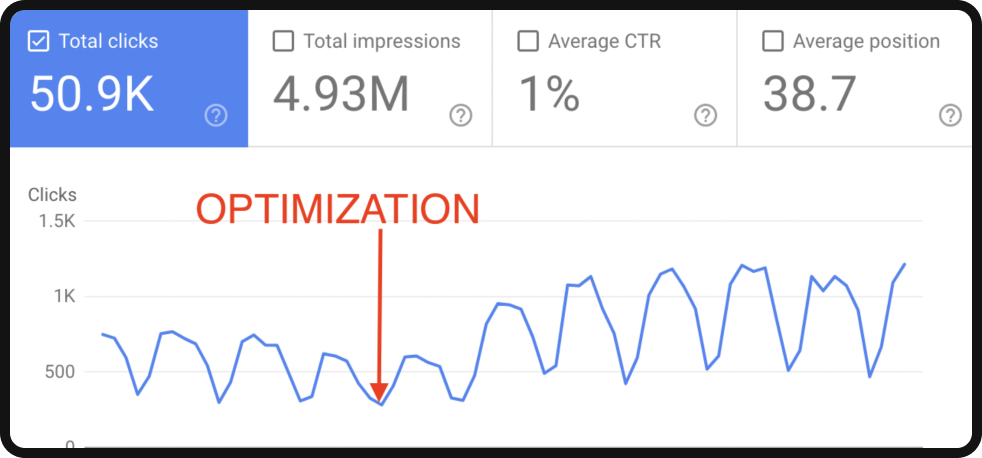
The Complete Guide To Header Tag SEO
When you set out to write a piece of content you must identify the following elements:
- Targeted Keyword
- Secondary Keywords
- Semantically related Keywords
The details that you get from identifying the above will guide you on what specific keywords and phrases you need to include in your header tag structure.
For the following, let’s assume these are the keywords we’re working with:
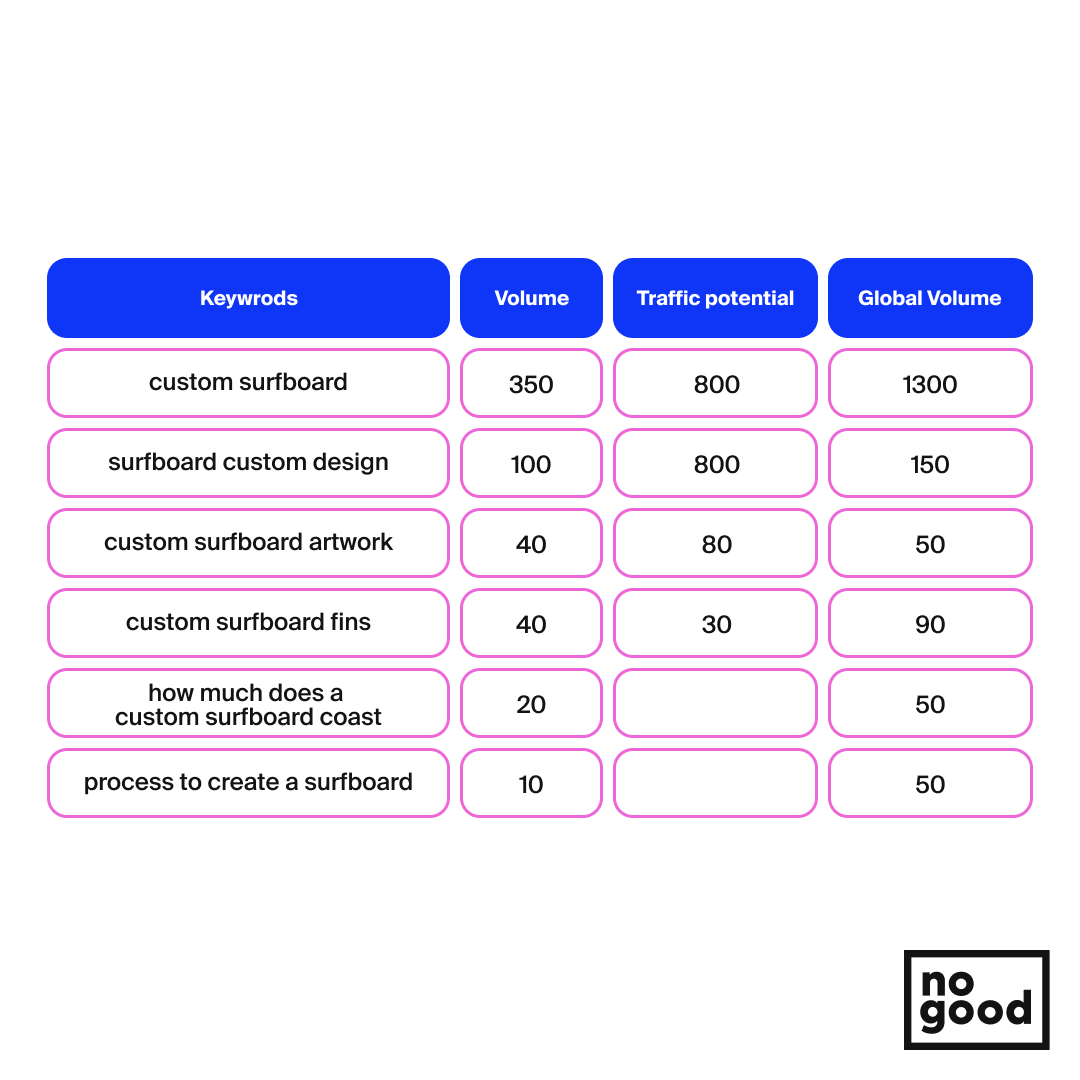
We’re writing the first blog post for a site that specializes in building and selling high-end custom surfboards. Notice that each keyword we include in this post has its own associated traffic and is being targeted, allowing this blog post to potentially rank for not just the above keywords but for all related keywords. Being targeted allows you to rank for a large variety of keywords which generates more traffic.
1. Header 1 Tag SEO
The overarching idea is “custom surfboard(s)” so we want to make sure we include that in the <h1> tag. This ensures crawlers understand the area in which we hope to be ranked. Once a crawler understands that it will attempt to look for other phrases and keywords that it has encountered when attempting to rank pages it comes across with similar content.
Long story short, we want to make sure “custom surfboard(s)” is included in our title. Something that might work is “Building & Pricing Custom Surfboards”. This title aligns well with the process of building and ultimately buying a surfboard. People want to understand the artistic process but also want to make sure they can afford to purchase.
Here’s how it looks in HTML:
| <h1>Building & Pricing Custom Surfboard</h1> |
2. Header 2 SEO
This is where we want to include the supporting elements and build an outline of what keywords/ phrases need to appear where. When building your content, you need to ensure you’re taking the user’s journey into consideration and build the content accordingly. Don’t talk about price if they’re not ready for that yet. Meet them where they are on the journey.
Here are our supporting keywords:
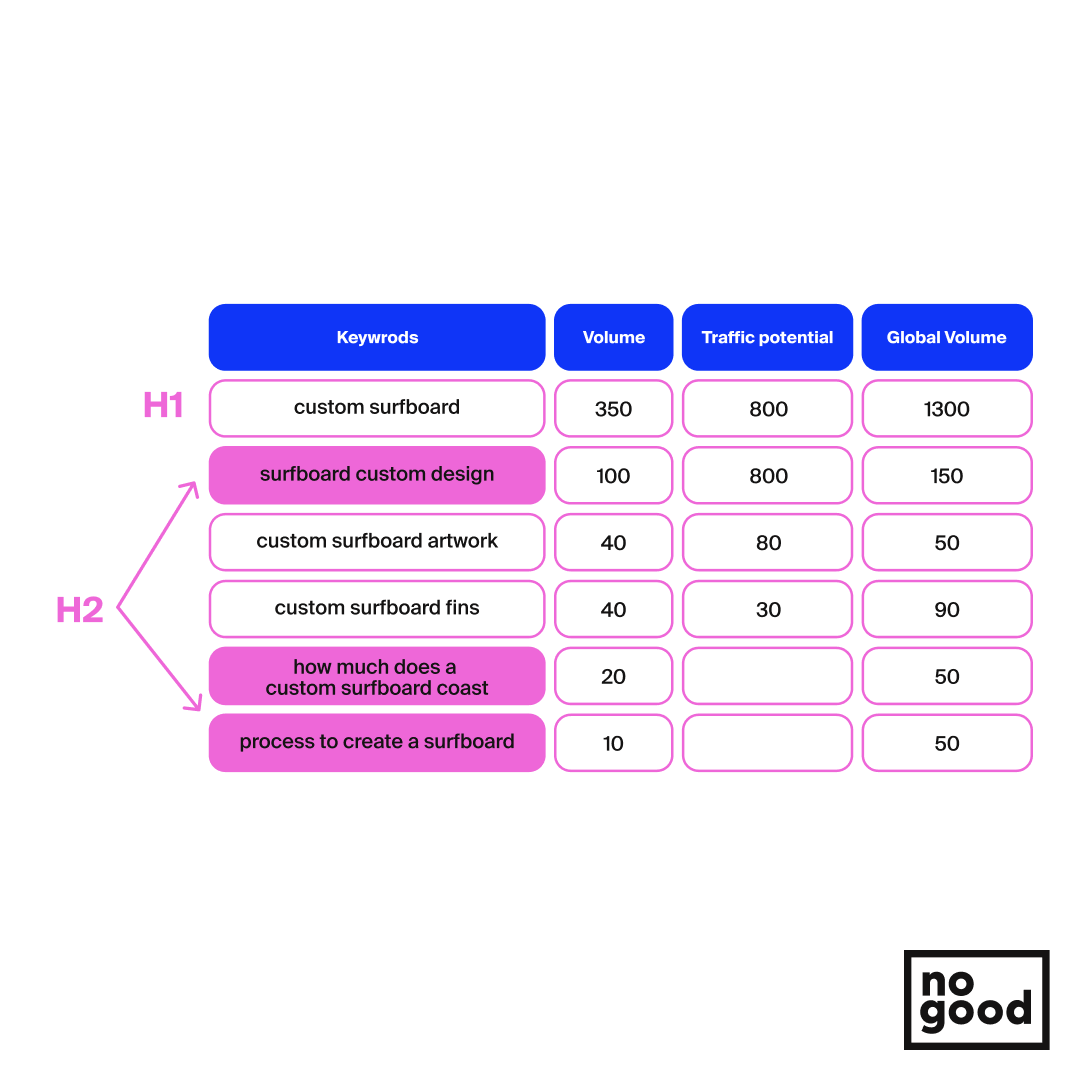
Here’s how I’ve structured them:
| <h1>Building & Pricing Custom Surfboard</h1> <h2>Process To Create Surfboard</h2> <h2>Elements of a Custom Surfboard Custom Design</h2> <h2>How Much Does a Custom Surfboard Cost?</h2> |
3. Header 3 SEO
Header three tags, if you remember from earlier, are to support the ideas or concepts identified in your <h2> — these are key when showing depth of content. Properly structured <h3> tags communicate content comprehensively and if you are properly targeted you can see traffic benefits.
Here are our <h3> tags:
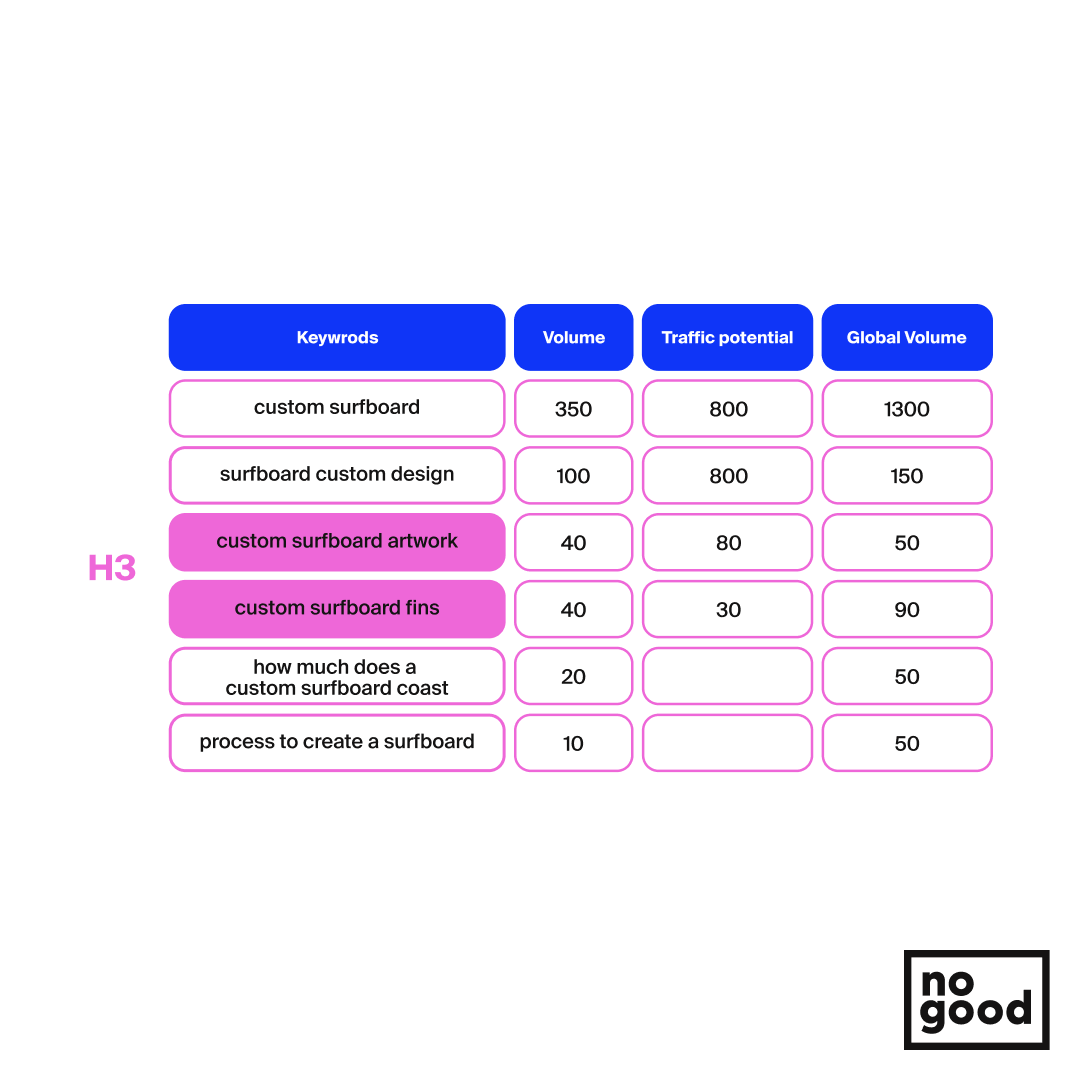
Here’s how I’ve structured it in HTML:
| <h1>Building & Pricing Custom Surfboard</h1> <h2>Process To Create Surfboard</h2> <h2>Elements of a Custom Surfboard Custom Design</h2> <h3>Custom Surfboard Artwork – Mixed Use</h3> <h3>Intricacies Of Custom Surfboard Fins</h3> <h2>How Much Does a Custom Surfboard Cost?</h2> |
Implementing Header Tag SEO
If you are implementing a content strategy and aren’t prioritizing header tag optimization you’re likely leaving a heavy amount of traffic on the table. Getting the most out of your content should be priority number one.
If you would like to discuss any SEO-related topics or initiatives with our skilled team of marketers contact us anytime. Review our SEO services and additional guides for more ideas and tactics.







